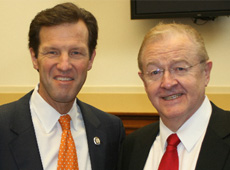Poll returns most female MLAs in Assembly’s history
Posted By: March 06, 2017
Allison Morris. Irish News. Belfast. Monday, March 6, 2017
The 2017 snap election ended with the highest number of female elected representatives since the formation of the Northern Ireland assembly and with three of the elected women party leaders.
Of the 90 assembly members elected, 27 are women – 30 percent of MLAs while the figure is down from the 30 elected in 2016, because of the reduced assembly, it is an increase percentage wise.
The largest proportion of female MLAs came from within the ranks of Sinn Féin, 11 of the party’s 27 elected candidates are female, including party leader Michelle O’Neill.
Orlaithí Flynn in west Belfast and Meagan Fearon in Newry and Armagh are also among the youngest assembly members.
Of the SDLP members elected after Thursday’s vote, Sinead Bradley in South Down, Nichola Mallon in north Belfast and South Belfast representative Claire Hanna are three of the most outspoken members of the opposition. The return of party veteran Dolores Kelly in Upper Bann brought the figure to four out of 12.
The DUP has the second highest number of elected female representatives including leader Arlene Foster but lost some high-profile MLAs in the cull of ten members, including Emma Little Pengelly who had previously been put forward as a spokesperson for the party in media interviews. Former Lagan Valley MLA Brenda Hale also lost her seat. The Ulster Unionist Party women fared badly.
Jo-Anne Dobson, Jenny Palmer, and Sandra Overend all failed to be re-elected, leaving the party with just one female MLA – Rosemary Barton in Fermanagh and South Tyrone.
Alliance have three women elected out of their eight assembly members, including party leader Naomi Long, Strangford’s Kellie Armstrong and Paula Bradshaw in south Belfast.
There are two independent women also elected, including former justice minister Clare Sugden and the Green Party’s Claire Bailey. The increase means Stormont’s female representation is considerably higher than the Dáil where just 22 per cent of TDs are female – 35 women out of 158.
That is less than the upper house where 32 percent of senators are female. Of the 60 members of the Seanad, 19 are women.
In Westminster, 191 elected MPs are female, a figure of 29 per cent, including Prime Minister, Theresa May.










